The vitality of your car is often mirrored in its interior, with the roof lining playing a pivotal role in preserving both its aesthetic appeal and comfort. Unfortunately, the importance of roof lining is frequently overlooked until troublesome issues arise. Understanding the purpose and wear factors of roof lining is important. This article will discuss car roof lining, including its condition and signs that indicate it needs maintenance or a professional car interior roof repair. To make your vehicle’s interior last longer and look better, get professional help when needed and take preventive measures. As a car owner, this knowledge can help you avoid unexpected inconveniences and maintain your car’s luxurious look and feel for many years to come.
Defining Car Roof Lining and Its Role
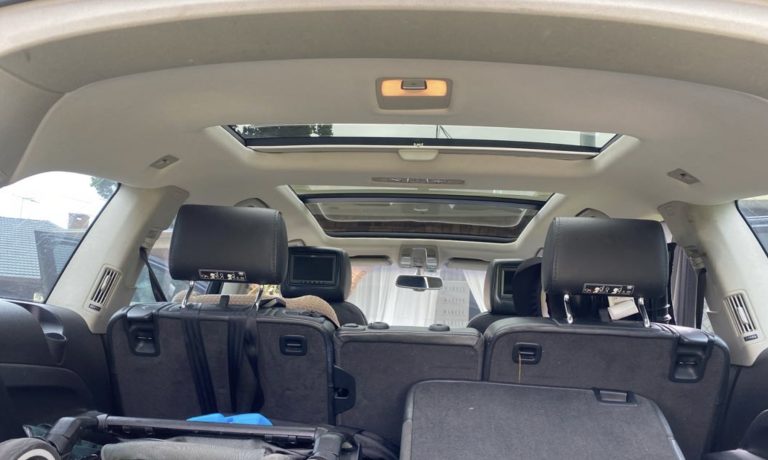
The car roof lining, also known as a headliner, is a composite material affixed to the interior ceiling of the car. It typically consists of an outer fabric layer, a middle foam layer, and a baseboard tailored to fit the shape of the roof interior. This combination of layers offers more than just aesthetic appeal; they serve a multitude of practical functions.
The roof lining acts as a plush ceiling cover, providing a polished look to the vehicle’s interior by concealing the car’s internal structures, wires, and inner roof layer. This results in a neat and refined appearance. Often overlooked as it sits above our heads, but when it begins to sag, there is no hiding this obvious eye-sore. So frequently across our experience, we notice customers neglecting their car interior roof until it is too late.
The foam layer of the roof lining plays a crucial role in noise insulation. It significantly reduces the impact of external noises such as road noise and wind, contributing to a quieter, more serene driving experience.
Additionally, the roof lining offers thermal insulation, helping to maintain a comfortable temperature inside the car regardless of the weather conditions outside. Subtle advantages like this, is what makes it so useful to have a well fitted headliner, it is not just there for aesthetic appeal.
Beyond these functions, the roof lining also serves a safety purpose, providing a cushion that can minimise injuries in the event of an accident. Just like your car windows, if they shatter upon contact, this could pose a very dangerous situation where shards of glass could cause injury. Similarly enough, you do not want any hanging wires or metal components spearing through the air during accidents.
In summary, the car roof lining is a critical component that enhances your vehicle’s aesthetic appeal, noise control, thermal comfort, and safety. It’s an element that deserves your attention and care.
Exploring Wear and Tear on Car Roof Lining
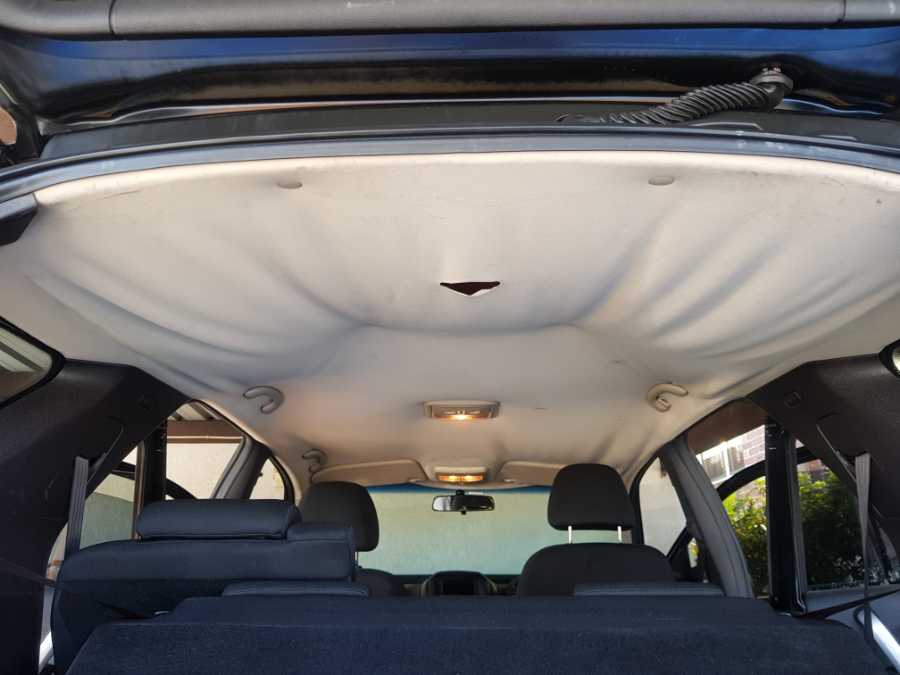
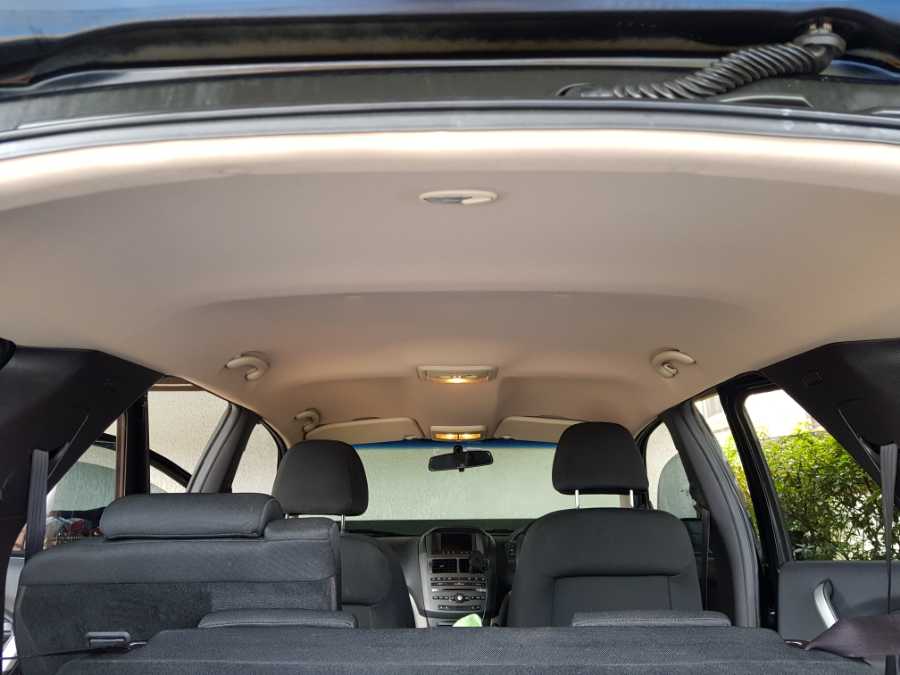
Your car roof upholstery, while robust and designed for durability, is not invincible to the effects of time and use. Throughout the life of your vehicle, the roof lining encounters a myriad of conditions that can lead to its slow but steady decline. This is why you will rarely see signs of sagging during the early years of any car. Based on our history and experience, cars will typically see this appear more progressively as they approach at least 7 years of age. But of course, this number is quite arbitrary as we do need to consider other factors that can influence its overall condition such as heat, moisture, physical force and so on.
The most common sign of wear and tear on car roof lining is the degradation of the foam layer. As this layer ages, it loses its elasticity and begins to crumble. This process can be accelerated by certain conditions such as high temperatures and humidity, which erode the foam’s structural integrity.
The adhesive that binds the fabric to the foam can also weaken over time, causing the fabric to sag or detach from the roof. This is a common indicator of roof lining wear and tear.
Additionally, the fabric of the roof lining is not immune to damage. It can be stained by accidental spills or fade due to prolonged exposure to sunlight. Physical impacts can also lead to tears or holes in the fabric.
The deterioration of the roof lining is often a slow, subtle process that may not be immediately apparent. However, understanding this process is key to early detection and timely intervention for maintenance or repair.
Factors Contributing to Roof Lining Damage

To fully grasp the causes of roof lining damage, it’s essential to consider both internal and external factors. Internally, the chemical breakdown of materials, adhesive weakening, and physical damage can contribute to the decline of the roof lining. Externally, environmental conditions, the age of the vehicle, and improper handling or maintenance can significantly affect the roof lining’s durability over time.
These factors, either individually or collectively, gradually undermine the roof lining, leading to the wear and tear symptoms we’ve discussed. In the following sections, we’ll delve into these contributing factors in more detail. This knowledge will empower you to extend the lifespan of your car’s roof lining by understanding what to avoid and how to properly care for it.
The Impact of Natural Ageing and Environmental Factors
The passage of time and the elements are silent adversaries to the longevity of your car’s roof lining. As your car ages, the foam backing beneath the fabric, along with the adhesive binding them, gradually loses its vigour and elasticity.
For instance, the adhesive’s binding strength can weaken under prolonged exposure to heat, a common occurrence during summer or when vehicles are parked outdoors for extended durations. This often results in the roof lining sagging or drooping.
Humidity can intensify this effect by deteriorating the foam backing. On the other hand, extremely dry conditions can render it brittle and prone to crumbling, leading to sagging as the fabric loses its support.
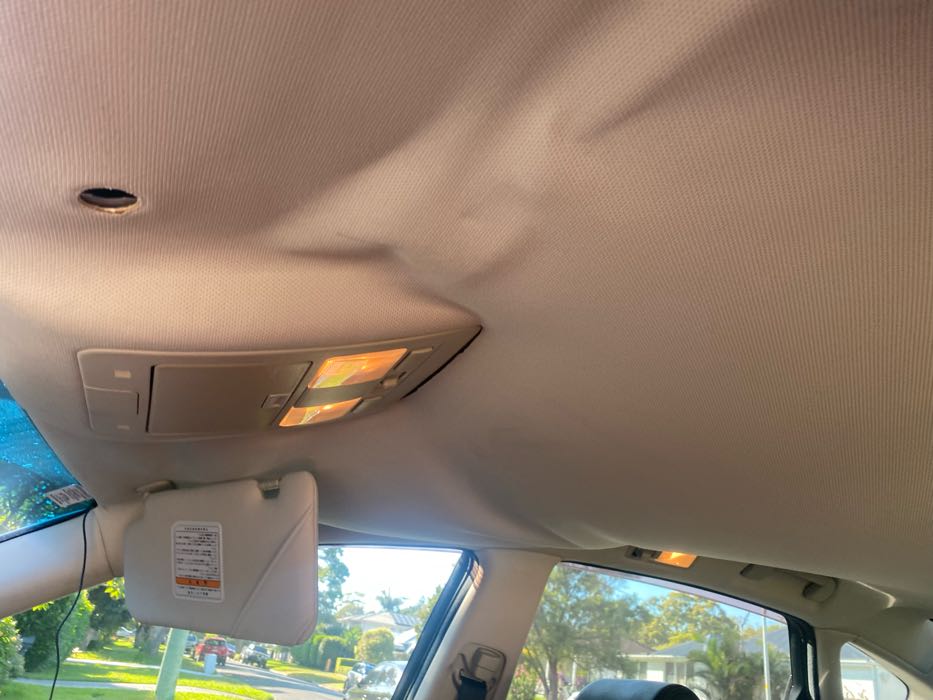
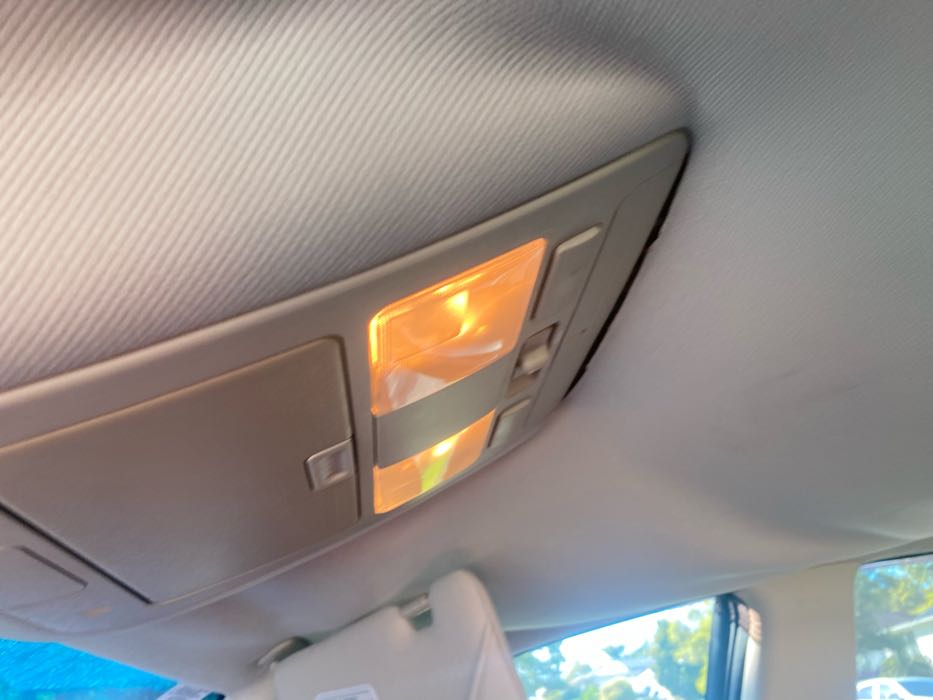
Moreover, excessive sunlight exposure can not only fade the roof lining fabric but also speed up the foam’s hardening and degradation process. While high-quality roof linings possess UV-resistant properties, they too have their limitations and will eventually yield to sustained UV exposure.
In colder climates or seasons, the fabric and foam may become rigid and contract due to the cold. When exposed to warmer conditions, these materials expand. This repeated cycle of contraction and expansion can cause the fabric to separate from the foam, leading to a loose roof lining. Just like how your jumper stretches and loses its new feel over time with each wash and wear, similarly, this happens with the car interior roof upholstery.
By understanding the effects of ageing and environmental factors, you can actively monitor your car roof lining for early signs of wear and tear, facilitating preventative measures or timely repairs.
Damage from Improper Handling and Maintenance
Improper handling and inadequate maintenance can significantly accelerate the deterioration of the car interior roof upholstery.
Physical impact, such as bumping heavy items against the roof lining or an occupant’s head hitting it, can cause visible dents or even tears in the fabric. Carelessly installing and removing items like roof racks or child seat anchor clips can also inflict direct damage onto the roof lining over time.
DIY repairs or interior adjustments can unintentionally harm the roof lining if not done correctly. This includes improper removal of the roof lining, which can result in torn fabric or a distorted shape that’s challenging to refit. Using inappropriate or low-quality adhesives during DIY repairs can leave unsightly residue or provide inadequate bonding strength, leading to premature detachment.
Furthermore, neglecting minor damages or failing to perform regular maintenance can escalate small issues. Stains from spills or leaks that are not promptly addressed can become permanent. Ignoring minor sagging can result in a progressively loose roof lining that eventually detaches entirely. In our time, we have seen all sorts of stains on the headliner, ranging from exploding sunscreen, makeup residue, sticky fingerprints from kids, hair, greasy mechanic hands and much more.
Habits such as smoking inside the vehicle without adequate ventilation can stain and discolour the roof lining. Similarly, leaving windows open during rain can cause water ingress, leading to damp patches on the lining and potential mould growth.
By understanding these factors, you can prevent avoidable car interior roof upholstery repairs. Gentle handling, regular maintenance, and prompt attention to minor issues can significantly extend the lifespan of your car roof lining.
Recognising Signs of Wear and Tear on Car Roof Lining
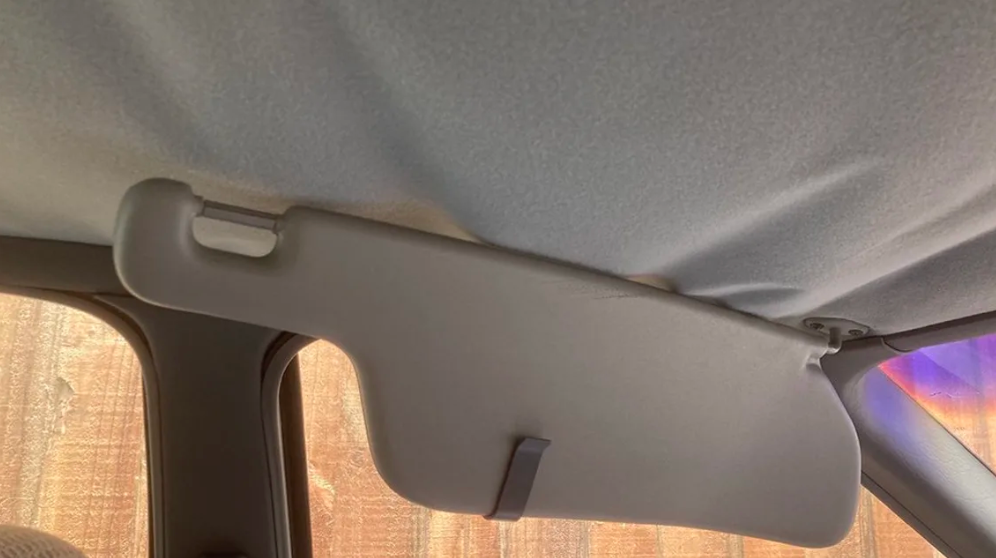
The first line of defense against escalating roof lining issues is early detection. By comprehending the process of deterioration and conducting routine inspections, you can spot the telltale signs of wear and tear. Although these symptoms can differ in appearance and severity, some are universally recognized as precursors to roof lining problems. In the following sections, we delve into the most noticeable signs of roof lining wear, namely sagging and staining. This knowledge equips you to respond promptly and effectively when these issues surface, enabling you to halt the progression of wear and tear.
Visible Indicators: Sagging and Staining
Timely detection of visible signs of wear and tear on your car roof lining is crucial in preventing further damage. Sagging and staining are two such prominent indicators.
Sagging often begins at the edges or around fixtures like interior lights or sun visors, gradually extending to the entire lining. This is typically due to adhesive failure caused by aging or environmental factors. Less frequently, sagging can result from rips or damage in the roof lining fabric.
Staining, conversely, can arise from various sources. Water leaks from defective seals or windows left open during rain can create water marks or damp patches. Spills from beverages or liquid food items, particularly those that are sticky or oil-based, can leave lasting stains if not promptly cleaned. Regular smoking inside the vehicle can cause the roof lining to yellow or brown.
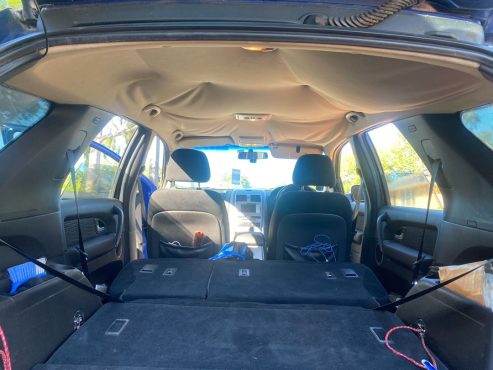
Other less frequent but equally harmful types of stains can originate from mold due to dampness, or residue from ill-advised DIY repairs using inappropriate adhesives.
By recognizing these visible signs of sagging and staining, you can take immediate action to repair the damage before it escalates. Understanding the causes behind these signs also offers a roadmap for what to avoid in daily use and how to maintain your car roof lining.
Guidelines for Repairing and Maintaining Car Roof Lining
Recognising the signs of wear and tear is only half the battle; understanding how to address and prevent such damage is equally crucial. The extent of the damage may range from minor, manageable issues to severe conditions that necessitate professional intervention. Having a basic set of guidelines at your disposal can be invaluable in these situations. However, the process doesn’t end with repairs. Implementing preventive maintenance strategies can help circumvent potential problems, thereby extending the lifespan of your car roof lining. In the subsequent sections, we will delve into the optimal strategies for maintaining and repairing your vehicle’s roof lining.
Seeking Professional Repair Services
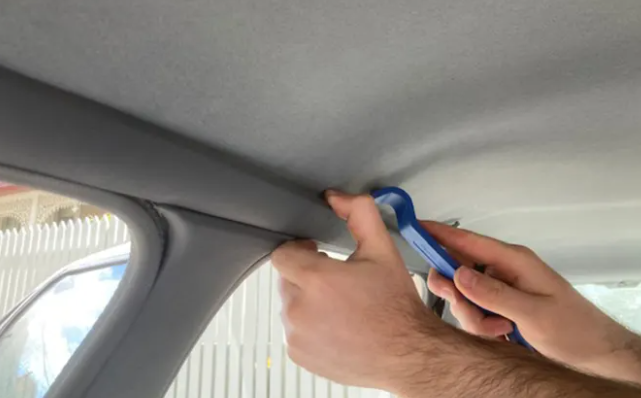
While minor roof lining issues like slight sagging or small stains may seem like manageable DIY projects, it’s often prudent to seek professional help. Roof lining repair is a complex task that involves removing interior parts and lights, detaching the roof lining without causing further damage, and especially to the wiring cables.
Professional repair services come equipped with the necessary tools, knowledge of suitable materials, and the skills to effectively replace and refit a new upholstery headliner.
These professionals are also instrumental in identifying and rectifying damage sources such as leaks or mould formation. They can implement preventive measures like applying a UV-protectant spray to slow down future fading and ageing due to sunlight exposure.
While DIY may initially seem cost-effective, improper handling can lead to additional issues, escalating costs in the long run, we rarely find it ever performed to an acceptable standard. Our team have had a fair share of DIY projects come through our way and it most often, it is more difficult to repair someone else’s mistakes.
Preventive Maintenance Tips

Preserving the integrity of your car’s roof lining is not a herculean task. By adopting a few preventive maintenance strategies, you can significantly extend its lifespan. Here’s how:
Firstly, make cleaning a routine. Use cleaning agents specifically designed for car upholstery to keep your roof lining spotless and fresh. This not only prevents stubborn stains but also maintains the fabric’s original appearance. Think of it as giving your car a mini spa treatment!
Secondly, exercise caution when loading and unloading bulky items. The roof lining is not a storage space, and any pressure or impact can cause damage. Imagine it as a delicate piece of art – you wouldn’t want to bump into it, would you?
Thirdly, refrain from smoking inside the car. Smoke not only imparts an unpleasant odor that the roof lining can absorb, but it also heightens the risk of discoloration and fire damage. Consider your car a no-smoking zone for the sake of your roof lining.
Next, address any leaks promptly. Water dripping onto the roof lining can lead to mold growth. If your car interior gets wet, ensure it’s dried thoroughly. It’s like protecting your home from a leaky roof – you wouldn’t want the water to cause damage, right?
Furthermore, be gentle when installing or removing items like child seat anchor clips or roof racks. Any direct force can harm the roof lining. Treat it as you would a fragile item – with care and caution.
Also, avoid DIY repairs unless you’re absolutely confident. Incorrect removal or reattachment of roof linings can exacerbate the damage. It’s like performing surgery – if you’re not a professional, it’s best to leave it to the experts.
Moreover, try to park your car in shaded areas to minimize heat and sun damage. Think of it as providing your car with a cool, protective hat!
Lastly, schedule regular check-ups with professionals who can identify early signs of wear and tear that might escape your notice. It’s like a regular health check-up, but for your car.
By following these practices, you can effectively maintain your roof lining, prevent minor issues from becoming major problems, and significantly enhance the longevity of this crucial component of your vehicle

Car Care Advice For The Everyday Driver & Enthusiast
With a relentless hunger to deliver car owners and drivers across the world with the latest emerging trends and innovations in the car space, you have tuned into the right place.
The post The Silent Enemies of Car Headliner Wear and Tear appeared first on Schmicko Mobile Auto Care & Installations.
